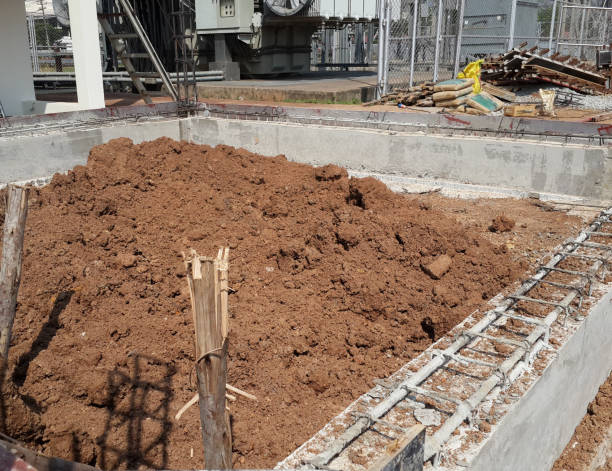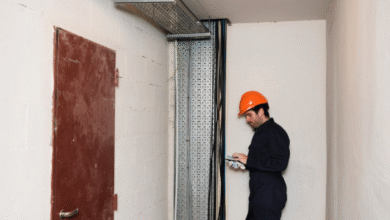Ground Beam Foundations – Built to Withstand Time and Weather

Introduction to Ground Beam Foundations
A building’s foundation is more than just a starting point for construction — it is the core element that determines stability, safety, and longevity. Ground beam foundations have emerged as one of the most effective ways to ensure a building can endure both environmental conditions and structural demands. Their strength lies in their design, which connects load-bearing points with reinforced concrete beams that can handle significant stress over long periods.
What Makes Ground Beam Foundations Different?
Unlike traditional strip foundations, which rely heavily on uniform soil conditions, ground beam foundations are designed to adapt to varying ground profiles. The beams are supported by piles or pads placed at strategic points, allowing them to bridge weaker or unstable soil areas. This makes them especially suitable for sites where soil conditions would otherwise limit construction options.
The Role of Reinforcement in Durability
Reinforcement is at the heart of a ground beam’s strength. Steel rebar or mesh is embedded within the concrete to resist tensile forces and prevent cracking. This combination of materials ensures that the beams maintain their structural integrity even under extreme load or environmental stress. It also increases resistance to temperature variations, moisture infiltration, and freeze-thaw cycles common in the UK climate.
Designed for Harsh Weather Conditions
One of the reasons ground beam foundations are widely used is their ability to perform well in diverse weather conditions. In regions with high rainfall, proper drainage and concrete quality prevent water damage. In colder areas, reinforced beams resist frost heave, a common issue that can damage weaker foundations. With proper construction, these foundations remain stable despite seasonal ground movement.
Applications in Different Building Types
Residential Projects
Ground beam foundations are an ideal choice for new homes, extensions, and renovations where soil conditions require a more stable base. They also allow for level flooring in properties built on sloped or uneven ground.
Commercial and Industrial Builds
Factories, warehouses, and office complexes benefit from the load-bearing strength of ground beams, which support heavy machinery and multi-storey structures without excessive settlement.
Public Infrastructure
Schools, hospitals, and community buildings often use ground beam foundations to ensure long-term safety and reduce future maintenance costs.
How the Construction Process Works
Site Survey and Planning
A thorough site survey identifies soil type, load requirements, and any environmental concerns. This data informs the design of the foundation.
Support Installation
Piles or pad foundations are placed at precise points to bear the main structural loads.
Beam Formation and Reinforcement Placement
Formwork is constructed to create the shape of the beams. Steel reinforcement is carefully placed to maximise strength.
Concrete Pouring and Curing
High-grade concrete is poured into the formwork, ensuring complete coverage of the reinforcement. The curing process is carefully monitored to prevent shrinkage cracks.
The Advantages of Ground Beam Foundations
Enhanced Load Distribution
By connecting load-bearing points, ground beams distribute weight evenly across the structure, preventing concentrated stress points.
Versatility Across Sites
This method works for projects on uneven ground, in poor soil conditions, or in locations with limited access for large machinery.
Longevity and Low Maintenance
When built correctly, ground beam foundations can last for decades without significant repairs, even in challenging environments.
Avoiding Common Mistakes
Skipping Proper Soil Analysis
Failing to understand ground conditions can lead to under-designed foundations that are prone to settlement or cracking.
Using Substandard Materials
Poor-quality concrete or inadequate reinforcement compromises structural performance and reduces lifespan.
Neglecting Weather Considerations
Construction methods must account for rain, frost, and temperature changes to prevent early damage.
The Value of Working with Experts
The complexity of ground beam foundations means that experience is crucial. Engineers and contractors who specialise in this area know how to tailor designs for maximum efficiency and durability. This is why many projects benefit from specialist ground beam construction in the UK, ensuring the right techniques and materials are used for long-lasting results.
Maintenance and Long-Term Care
Although ground beam foundations are low maintenance, periodic inspections can help identify potential issues early. Checking for surface cracks, monitoring drainage, and addressing minor damage promptly will extend the foundation’s service life. Preventive care also reduces repair costs in the future.
Sustainability in Modern Ground Beam Design
As the construction industry moves toward greener practices, many projects now use sustainable concrete mixes and recycled steel reinforcement. This not only reduces environmental impact but also improves the energy efficiency of the construction process. Additionally, the reduced excavation depth often required for ground beams helps preserve surrounding land.
Cost Considerations
The cost of ground beam foundations varies depending on site complexity, reinforcement requirements, and material quality. While the initial investment may be higher compared to some alternatives, the long-term durability and reduced need for repairs make it a financially smart choice for many developers and property owners.
Why They Stand the Test of Time
The combination of reinforced design, adaptability to soil conditions, and resistance to environmental stresses ensures that ground beam foundations remain stable for decades. This durability makes them a trusted option for construction projects across residential, commercial, and public sectors.
Final Thoughts
Ground beam foundations provide a dependable solution for ensuring a building’s structural integrity in both the short and long term. Their strength, adaptability, and weather resistance make them suitable for a wide range of projects, from family homes to large-scale commercial developments. When designed and installed by experienced professionals, they deliver the stability needed to withstand the challenges of time and weather, safeguarding your investment for years to come.




